Almonds have earned a fond place in my heart and on my dining room table. They were a staple food for me before I developed histamine issues, but once I started exploring the low histamine diet, I started worrying that almonds were making me sick.
Almonds are often demonized in my low histamine Facebook groups, and I read so many warnings about them that I waited several weeks before trying to reintroduce them into my own diet. But are almonds high in histamine, all by themselves? The answer is no.
But are almonds low histamine? Also a complicated sort of.
This is because almonds are not inherently high in histamine, as alcohol and spinach are. However they do contain several chemicals which many histamine intolerant folks have trouble with, namely lectins, oxalates, salicylates, phytic acid, and digestion-lowering enzymes.
I'll go more in-depth into these below, but I'll also share that I have had zero issues with almonds and histamines, and currently I eat them almost every day. In fact, they feature prominently in my various low histamine recipes.
Between almond flour and raw almonds (which I also toast & use to make my own almond butter), I have several ounces a week, and they've never worsened my HIT symptoms. Now that we've established that almonds are low histamine, let's look at how to consume them safely.
For those looking to re-introduce almonds and other nuts, below are also some considerations to think about beforehand. Ahead of those, however, are the most common high & low histamine almond foods.
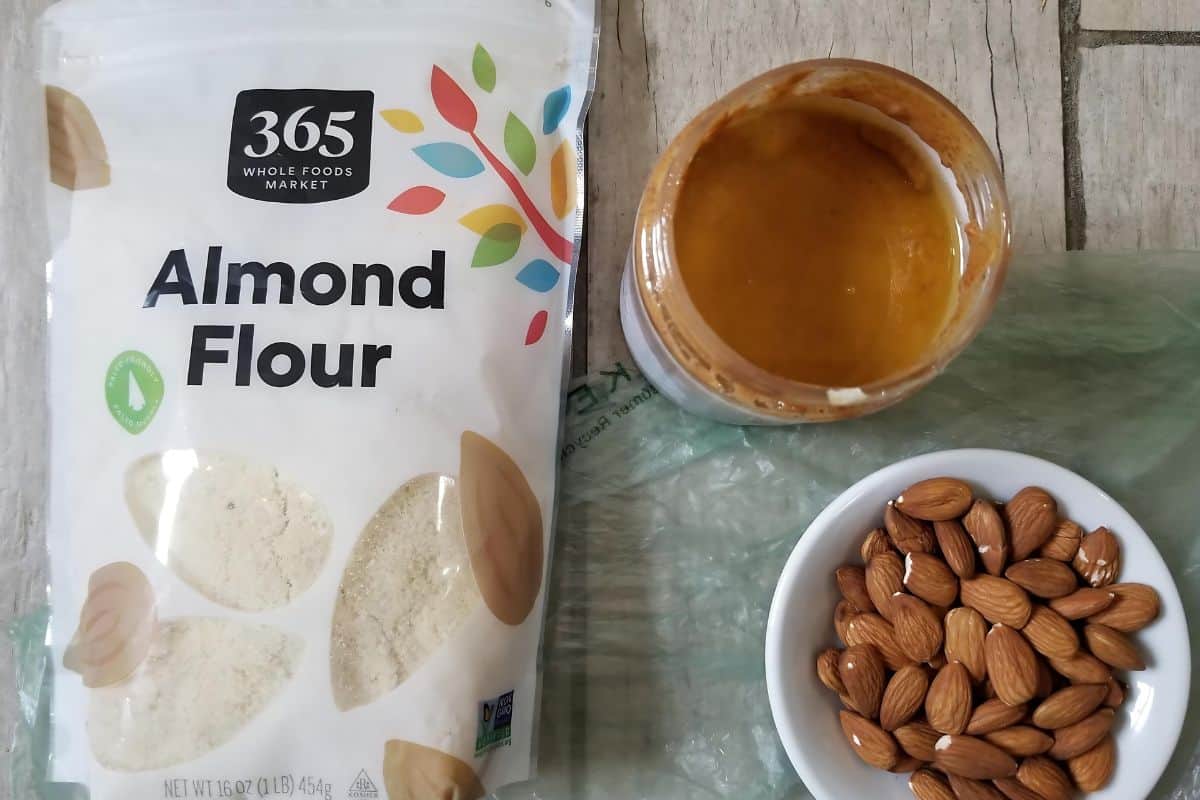
Jump to:
🥜 Potential Histamine-Adjacent Issues With Almonds
Almonds are generally a very nutritious food, with balanced proteins and healthy fats, plus fiber and some complex carbs. They're a great source of vitamin E and magnesium, but they're also high in phytic acid, oxalates, and salicylates.
The skins and outsides of the nuts are also high in digestion-inhibiting enzymes and lectins. But what are each of those substances, and how can they affect your ability to process almonds?
Phytic Acid is a form of phosphorous found in fiber-rich foods. It's known to impair the absorption of important minerals like calcium, iron, and zinc.
Lectin is a similarly inflammatory type of protein which is found is high-carb foods and can— in large amounts— cause damage to the gut wall and lower nutrient absorption. Soaking & then dehydrating almonds breaks down phytic acid and lectin, both of which lower the bioavailability of the nutrients in almonds.
Unfortunately there are other plant toxins which you can't just rinse off, and which may take almonds off the menu for you. Oxalate is a protective compound produced by both plants & animals in order to regulate calcium levels.
Too much oxalate can lead to kidney stones; and some who are people are very sensitive to oxalates should avoid foods rich in it (like almonds). Another substance plants make to protect themselves is Salicylate, which prevents rotting and may protect them from predators.
Large amounts of salicylate are lethal for any being, though those with a sensitivity will need to avoid it in large amounts. As you can see, there are several reasons why almonds may cause you trouble, completely unrelated to histamine content.
If you have issues with any of the plant chemicals above, take great caution in adding back in almonds, following all the steps below for a safer reintroduction.
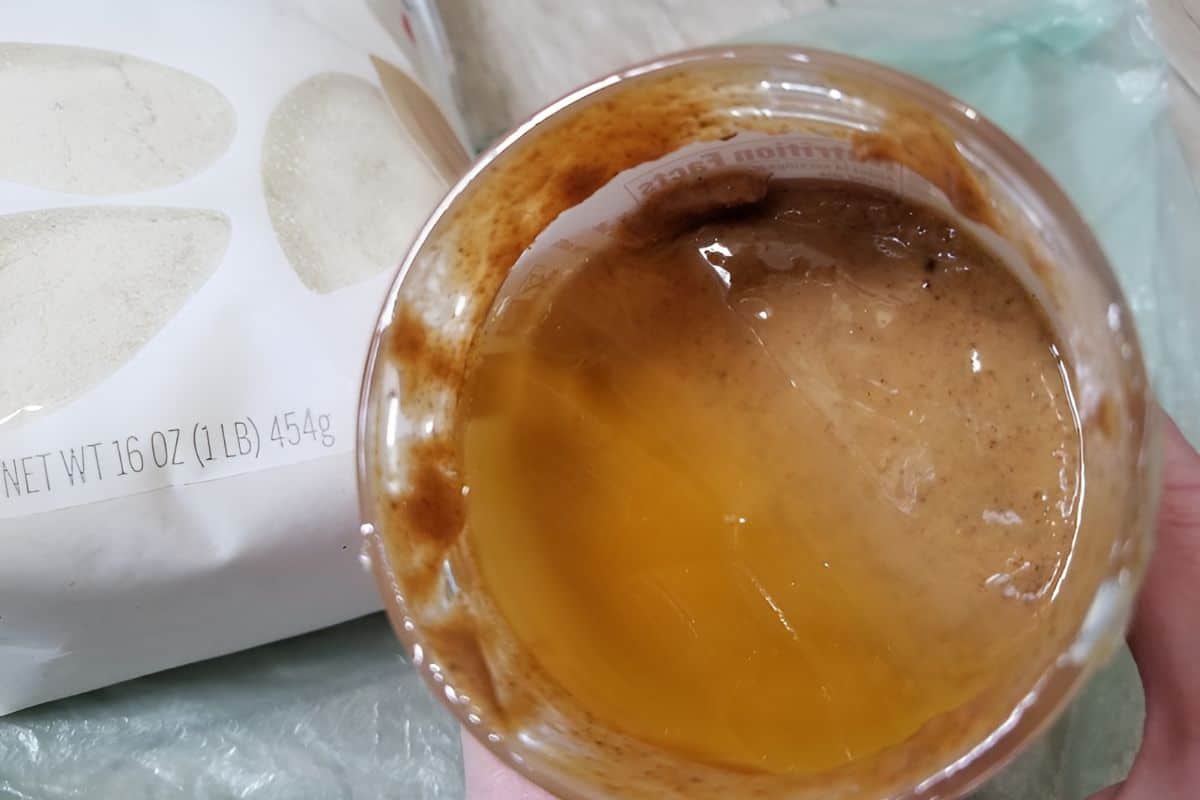
🍲 Histamine Content of Each Food
Raw Almonds
Organic raw almonds are low histamine, and they're the least likely almond product to cause any kind of reaction. In part this is because they tend to be the freshest form in which we consume almonds, but leaving them unroasted also keeps them naturally sweeter.
Overnight soaking and slowly drying your almonds back out, as detailed below, will retain the nuts' nutritional value while lowering the potential for mold contamination and lower the concentration of antinutrients.
Roasted Almonds (Salted or Plain)
This is where almonds can get a bit more iffy. You have to consume the freshest foods in order to lower their histamine reactivity. Roasted almonds will sometimes have a roast date stamped on the packaging, but this varies by country and manufacturer.
If you opt for pre-roasted almonds, always go for the one with the furthest-out expiration date and the fewest ingredients. Dry-roasted is best, but other low histamine oils include almond oil, coconut oil, olive oil, and cold-pressed avocado oil. The fewer ingredients the better, but just salt is the best.
Almond Butter
Almond butter is lowest in histamine when made from organic raw almonds, and the more freshly it was made, the better. Just like anything else, histamine builds up in food when it's allowed to age.
The process of turning almonds into almond butter also offers more opportunities to have introduced bacteria into the food, potentially increasing histamine or other amines.
Almond Milk
Not only are almonds low histamine, but almond milk is a great low histamine milk alternative, as long as it doesn't contain any sugar or preservatives. Unfortunately that's really hard to find on the open market, so I recommend you try to make your own almond milk, if possible.
Almond Flour
This is the almond-based food with the highest possibility of a reaction, because it is the most processed form of almonds listed here. I have not had any issues baking with almond flour, personally.
But if you have any history of plant toxin-sensitivity, you should be very careful when reintroducing nuts of any kind, and add in just one product at a time.
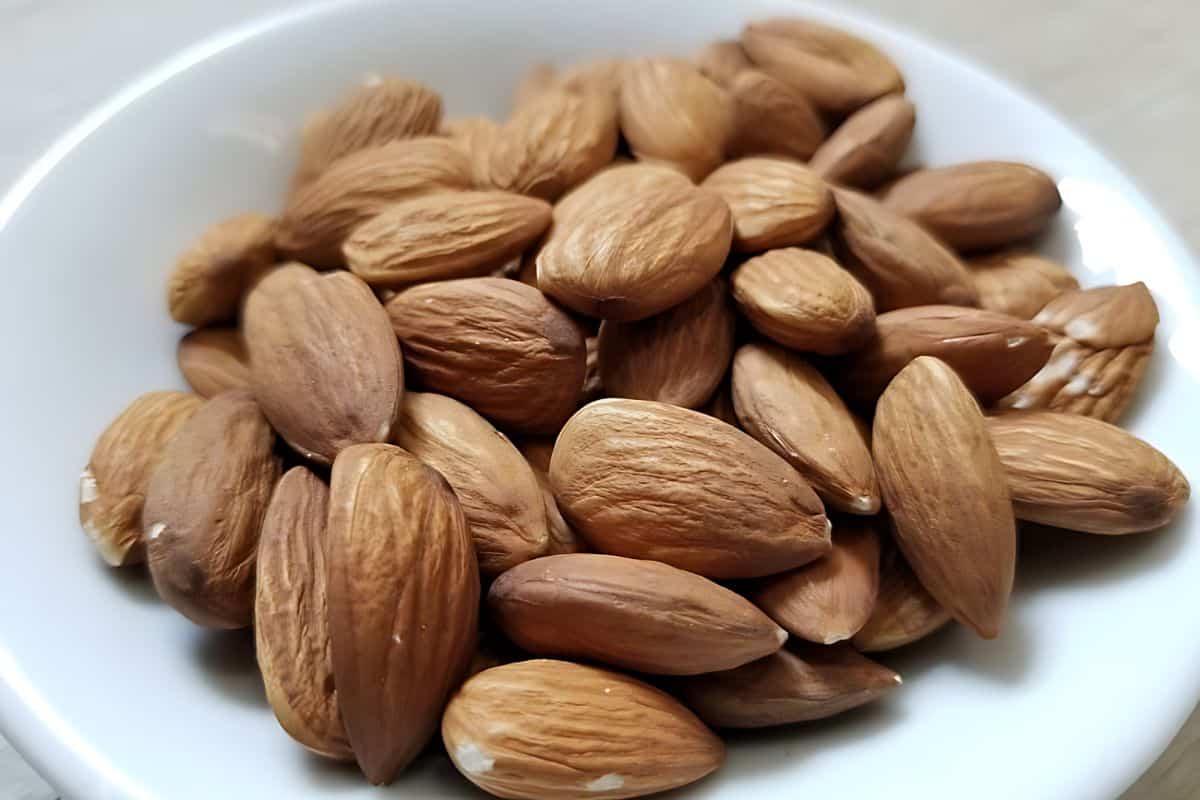
🤔 How to Reintroduce Almonds
You can safely reintroduce almonds on a low histamine diet in the same way as you would any other food— slowly and in small amounts over the course of several days. Start with raw organic almonds, soaked overnight and then dehydrated in the oven on a low temperature.
Just like with pecans and other tree nuts, almonds can be contaminated with mold. Soaking and then dehydrating them will reduce the risk of concurrent mold toxicity (which could trigger a reaction, even if you otherwise would have no issues with nuts).
This soaking also decreases phytic acid & enhances nutritional absorption. This soaking process is also called activating nuts, and these activated nuts should be stored in the freezer once they're dry. To sum up:
- Wait to reintroduce almonds if you have reactions to other foods containing oxalate, salicylate, and/or lectins, and add in products one at a time
- Buy organic blanched almonds, or remove the almond skins yourself (to limit lectins)
- Soak & dehydrate your almonds before trying them (and then store them in the freezer)
- Eat just 1 or 2 almonds with a safe meal, and if you don't react, then try 7 or 8 the next day and so on
- Once you can have regular almonds, try homemade almond butter, and finally almond flour (these are listed in order of likelihood of a reaction)
- Enjoy a nutty recipe, like these vanilla almond cookies!













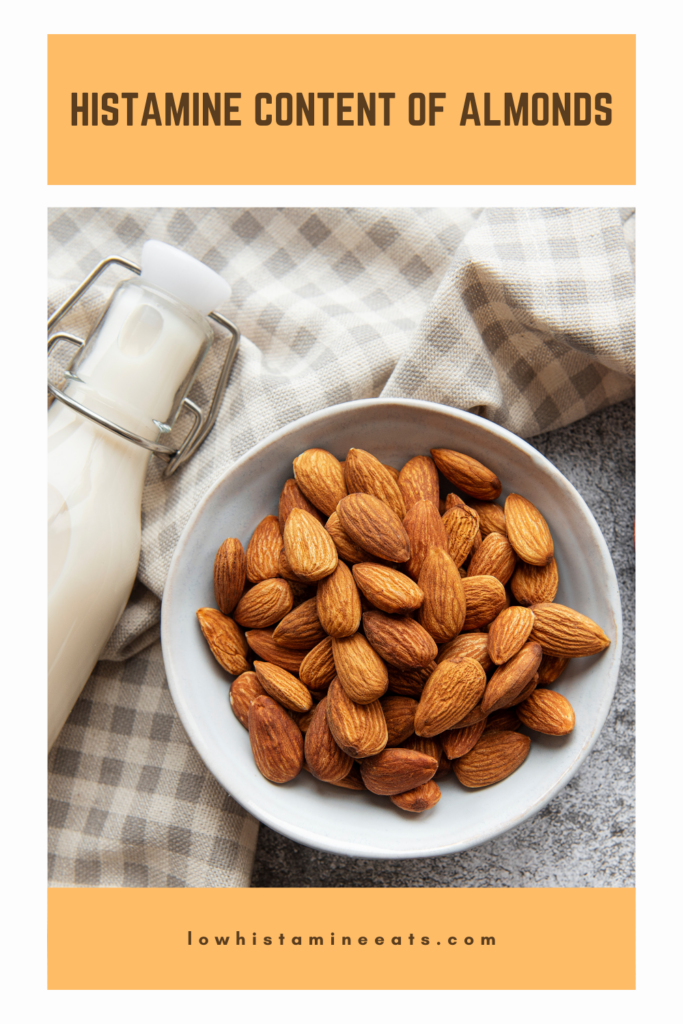
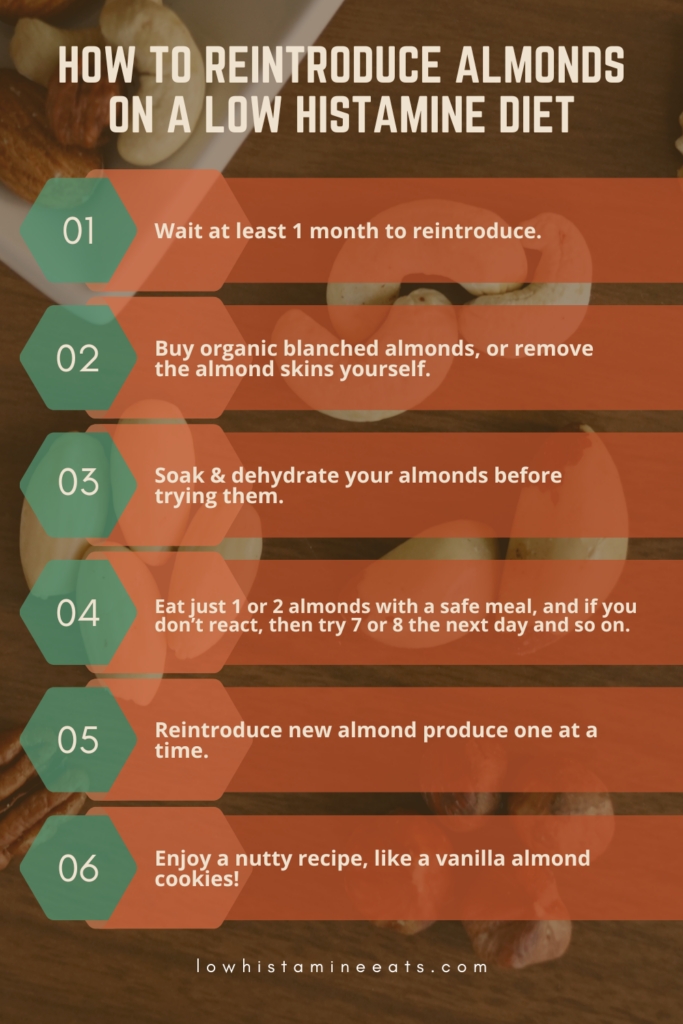

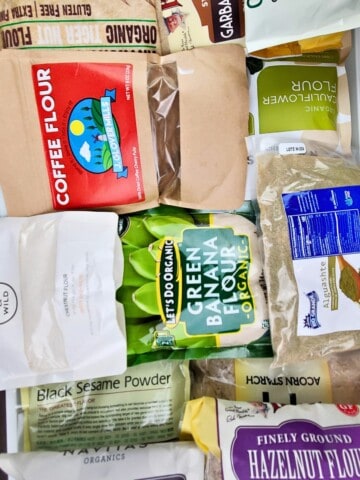
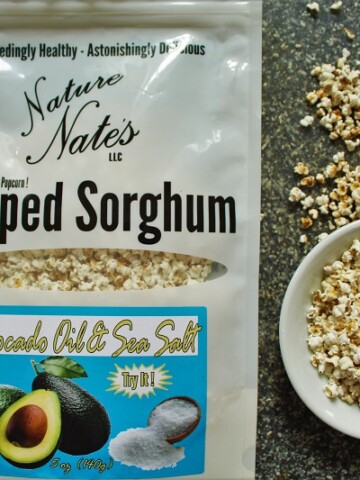

Melinda Moulton says
Hi Max - I have been substituting Tahini for peanut and almond butters - are Sesame seeds a contributor to histamine intolerance. Thanks Max.
Max says
Hi, Melinda! I'm not a doctor, so this isn't medical advice, but from my research tahini is low in histamine and generally well-tolerated, though the SIGHI list marks it as having a small amount of histamine. I've used it even when very histamine intolerant and never had any issue, but this is my personal experience.
Bori says
Hi Max! I wonder if blanched almonds tend to have a higher histamine content due to the factory pre-treatment with idk hot water or steam? Is it a safer option to blanch the almonds myself right before I use them? Thanks a lot for any insight or experience.
Max says
You know, I'm not actually sure. If you feel comfortable blanching them at home, though, that would be my route as you could be even more sure about how those nuts ere handled, then freeze them for quick storage. But my inkling would be that blanched would be lower oxalate, and therefore may induce less of a histamine response than whole ones. But that's just my guess, so however you approach it, try very small amounts initially.
Val says
Hi! Could you please tell me if almond oil is high histamine? My thyroid medication is compounded in almond oil and I’m just trying to figure out if it’s what’s flaring up my SIBO too. I’m thinking I have a food allergy to the almond oil too cause I get burning in my mouth on my tongue and on my lips throughout the day after I squirt the medication into my mouth. Thanks Val
lowhistamineeats says
Hi, Val! My mom actually has that same sensation (along with an itchy throat) when she eats bell peppers or pineapples, and nowadays she just avoids them. We suspect it's a mild allergy, so you may have that as well. As for the almond oil, that's a great question which I'll update the article later to add-- almond oil gets mixed reviews, just like almonds do. However I've never reacted to almond oil, and I've never reacted to the oil in almonds, so I know it's okay for me. And we know the iffy-ness about almonds come from complicating substances which can set off other sensitivities, so if you're okay with almonds, try cooking your next safe meal in almond oil instead of your usual and see if you have a sizable reaction. Unfortunately with "iffy" foods, that's the only way you're really going to know if each one is something you're sensitive to. I'm sorry your SIBO is flaring up, though; that's a horrible experience.